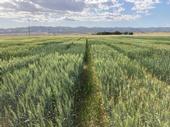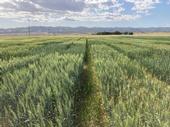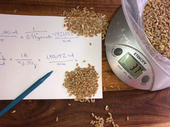- Author: Taylor Nelsen
- Author: Mark E Lundy
- Author: Salvador Grover
- Contributor: Leonardo Reynoso
- View More...

Preliminary grain yield results for our fall-planted common wheat, triticale, durum wheat and barley trials are now available on the UC Small Grains Research and Information Center website:
http://smallgrains.ucanr.edu/Annual_Variety_Results/Preliminary_2021_Yield_Results/
The results are preliminary and may change as samples are cleaned, processed for quality and corrected for variations in moisture content. Final results that...
- Author: Mark Lundy

Please join us on May 12th from 1PM - 4:30PM for the 2021 UC Small Grains/Alfalfa-Forages Virtual Field Day!
Learn about UC research and extension activities related to water, nutrient, soil, weed and pest management. Stay up to date on UC breeding and variety development work (the full AGENDA is available here).
Continuing education units (CEUs) will be available. Registration is required to receive CEUs. There is no charge to attend the meeting. We hope to see you there!
- Author: Konrad Mathesius
- Author: Taylor Nelsen
- Author: Mark Lundy

Seeding rate is an important consideration for small grain growers at planting. There are a number of agronomic factors that help to determine the ideal seeding rate such as whether a field will be irrigated, the potential for weed pressure or lodging, the planting date, crop type, and seed germinability. In addition, there can be a large range of seed weights among different small grain varieties and from one seed lot to the next. To achieve full yield potential under irrigated conditions in California, 25 to 30 plants per square foot is a good target density for wheat. As a seeding rate this translates to approximately 1.2 million seeds per acre with a seed weight of 40 gram per thousand seeds. However, adjustments to the seeding...
- Author: Mark Lundy
- Author: Taylor Nelsen
- Author: Konrad Mathesius
- Author: Michelle Leinfelder-Miles
- View More...

As the fall planting season begins, we'd like to share recently developed case studies detailing N management actions and crop productivity outcomes in several small grain fields during the 2019-20 growing season. Growers from different parts of the state worked with UC Cooperative Extension to implement N-rich reference zones in their fields. The N-rich reference zone is a relatively small area within a field where extra N fertilizer is added at the beginning of the season. This extra fertilizer ensures that the reference zone is not N-limited between planting and the time when an in-season fertilizer decision is made. When a grower is...
- Author: Taylor Nelsen
- Author: Mark Lundy
- Contributor: Rafael (Merf) Solorio
- Contributor: Ethan McCullough
- View More...

Results for the 2019-2020 fall planted UC Small Grain Variety Trials are now available at:
http://smallgrains.ucanr.edu/Variety_Selection/
Results can be viewed within an interactive environment that summarizes small grain varieties by crop type across multiple locations and season:
http://smallgrainselection.plantsciences.ucdavis.edu/
as well as an interactive environments that enables the exploration of data by individual site year:



